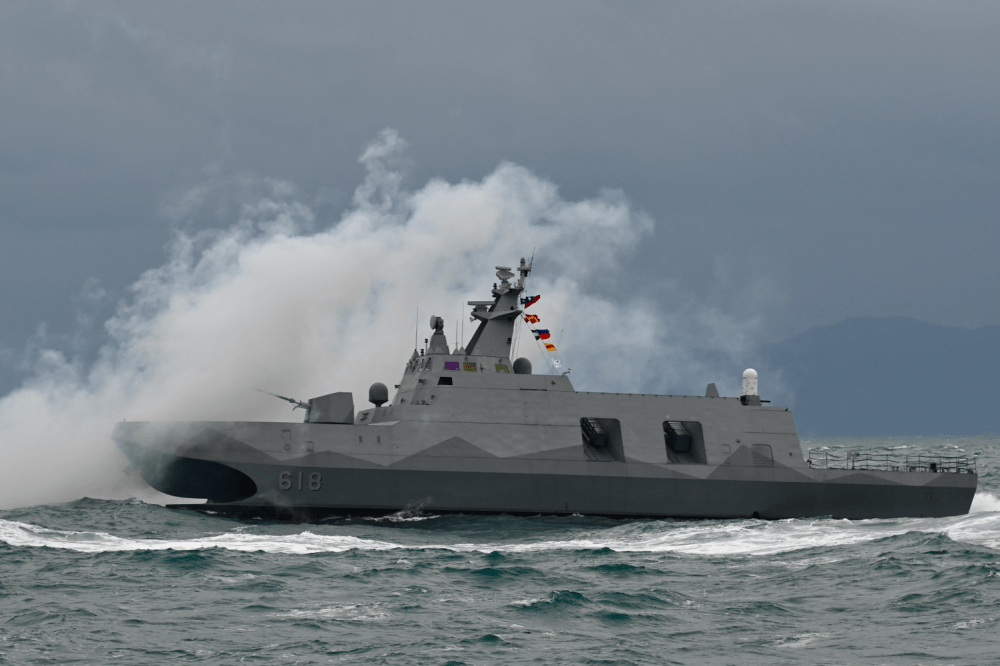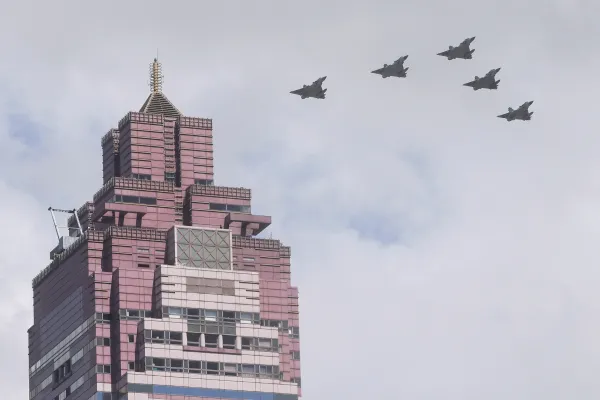•The Ukraine crisis should refocus thinking on China’s threats.
By Dan Blumenthal
As Russia edges toward a full-scale invasion, U.S. thinking is understandably focused on Ukraine. But spare a thought for how Chinese President Xi Jinping might emulate his Russian counterpart’s strategy. While there is much debate in Washington about a bolt-from-the-blue Chinese invasion of Taiwan, Beijing may instead generate a political-military crisis by threatening to use force. If the United States wants to avoid being caught flat-footed, it needs to begin preparing today.
Beijing’s goal is to force Taiwan to meet its political demands—the acceptance of Chinese control over the island—while preventing the United States from standing in the way. While it could invade Taiwan to achieve this outcome, it does not necessarily need to do so. China might be satisfied with a Hong Kong-like outcome in which a more acquiescent government in Taipei takes over and makes concessions that strengthen Chinese control of the island. Indeed, the fact that China can invade and occupy Taiwan makes coercion, combined with political machinations, more likely. A scenario in which the Chinese Communist Party passes a law that spells out steps that Taiwan needs to take to unify and avoid war is not unimaginable
Beijing’s challenge is that, unlike Hong Kong, Taiwan is a functionally independent state, separated from the mainland by a body of water, and Chinese authorities are not already present in Taiwan, as they were in Hong Kong. To overcome these obstacles, China thus must engineer a crisis that would compel Taiwanese concessions through the threat of full-scale war. To help Taiwan resist such coercion, Washington would need credible diplomatic and military options during a crisis—options that aren’t yet plausible. In fact, if China pursued an intensified campaign of coercion similar to Russian President Vladimir Putin’s current Ukraine strategy, Washington could be caught wholly unprepared.
There is no NATO in Asia. For all of NATO’s problems, a large coalition whose main purpose is to oppose aggression changes the aggressor’s risk calculus. While NATO is not militarily committed to Ukraine, Russia must still calculate what the alliance’s reaction to its aggression might be. In contrast, no single country—let alone any multilateral alliance—is similarly committed to Taiwan’s sovereignty and political independence. The United States is the closest, but, like the overwhelming majority of countries, it does not recognize Taiwan as a country and as such has very limited political engagement with its leaders. This would make it extremely difficult to coordinate policy in a crisis. Finally, the United States today has no formal commitment to defend Taiwan, and military engagement is thus severely restricted. The two militaries do not exercise together or take other steps necessary to prepare for a combined fight.
In contrast, the U.S. Defense Department and NATO have trained the Ukrainian military and know it well. U.S. diplomats are shuttling through European capitals, including Kyiv, to garner political and military support against Russia and coordinate punishing economic sanctions. Putin must take all of this into consideration. For Taiwan, however, alliance preparations for a crisis are all but nonexistent, though Japan is changing its policy. Coordinated coalition action against China is not a major concern for Xi.
Although the United States will not reinstate its former military alliance with Taiwan anytime soon, there are diplomatic and military steps that it can take now to forestall the fall of Taipei without breaking its commitment that it will not unilaterally recognize Taiwan as an independent country.
First, Washington can train a small U.S. military force that is prepared to land in Taiwan at the first sign of trouble to help protect its leadership, embed with front-line units, and secure communications between Taiwan and the outside world. The center of gravity of Chinese strategy is Taiwanese political will. The presence of U.S. military forces early in a crisis would be an enormous psychological boon to Taiwan’s people and its leaders and could dissuade Beijing from escalating a crisis. The number of troops involved need not be large or especially provocative.
The United States can start now by embedding small numbers of U.S. forces who speak Chinese with key Taiwanese units for significant periods of time. This would simply be a scaling up of existing programs. Washington can also increase the number of marine security officers stationed at its unofficial embassy. In addition, the United States can quietly begin to pre-position logistics and munitions on the island for use by both U.S. and Taiwanese forces.
The United States should also initiate strategic discussions and tabletop exercises with the political and military leadership of Japan, India, Australia, and permanent U.N. Security Council members Britain and France on responses to a Taiwan crisis. Allied leaders should familiarize themselves not only with possible military responses but also with other diplomatic, economic, and cyber-strategies to isolate, punish, and impose financial hardship on China should it choose the path of aggression. The new Washington consensus on Taiwan implies an almost automatic U.S. military response to a Chinese invasion, but history and the present crisis show that U.S. presidents always want to exercise nonkinetic means of deterrence first. They need good options, or the chances of doing nothing increase.

Taiwan’s Ta Chiang vessel, a domestically produced Tuo Chiang-class corvette, fires off flares during a drill on the seas off the northern Taiwanese city of Keelung on Jan. 7. SAM YEH/AFP VIA GETTY IMAGES
Thinking through comprehensive deterrent options is necessary because U.S. presidents improvise as crises unfold in unexpected ways. For example, China’s People’s Liberation Army could blockade Taiwan in addition to other political and military measures, and Washington may want to resupply the Taiwanese military and provide the country with humanitarian aid. U.S. national security leaders need to practice these scenarios with their allies, including Taiwan.
These steps may sound too provocative—though not all of them would need to be undertaken publicly. Yet it is China that has broken the status quo, by abrogating its promise to the United States that it would settle its disputes with Taiwan through peaceful means. Instead, China has built up its military for an invasion of Taiwan, has refused to publicly renounce the use of force to settle the dispute, passed “anti-secession” legislation that includes threats to attack Taiwan if certain political conditions are not met, and repeatedly engages in provocative air incursions around Taiwan as well as provocative military exercises close to the island. Taking small steps to better prepare for what could be one of the most complex crises in history is worth Chinese diplomatic protests.
Taiwan’s diplomatic isolation makes it uniquely susceptible to a Russia-like campaign of intimidation and coercion. If the United States is to help Taiwan maintain its de facto independence, it needs to become a lot more creative—and energetic—about preparing diplomatic, economic, and military responses to China’s designs on the island.
Dan Blumenthal is director of Asian studies at AEI and the author of the forthcoming book “The China Nightmare: The Grand Ambitions of a Decaying State” (AEI Press September, 2020).
Credit | Foreign Policy

